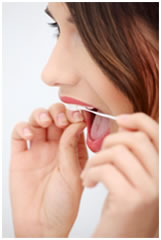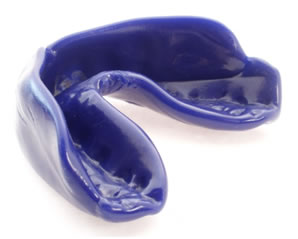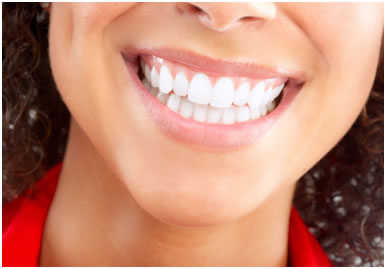Adolescent Oral Health Care

There is no standard definition of “adolescent”. Adolescents are generally defined as youths between the ages of 13 to 18. Tooth decay can actually increase during the teenage years, specifically due to poor dietary choices and inadequate dental hygiene.
The adolescent patient is recognized as having distinctive needs due to: (1) a potentially high caries rate; (2) increased risk for traumatic injury and periodontal disease; (3) a tendency for poor nutritional habits; (4) an increased esthetic desire and awareness; (5) complexity of combined orthodontic and restorative care (eg, congenitally missing teeth); (6) dental phobia; (7) potential use of tobacco, alcohol, and other drugs; (8) pregnancy; (9) eating disorders; and (10) unique social and psychological needs.
Current research suggests that the overall caries rate is declining, yet remains highest during adolescence. Immature permanent tooth enamel, a total increase in susceptible tooth surfaces, and environmental factors such as diet, independence to seek care or avoid it, a low priority for oral hygiene, and additional social factors also may contribute to the upward slope of caries in adolescence.
The best way for teens to enjoy a nice smile and healthy teeth is to continue the good oral habits started early in childhood. It is important to:
- Brush twice a day with a fluoridated toothpaste to remove plaque. Plaque is the main cause of tooth decay and gum disease.
- Floss daily to remove plaque from between your teeth and under your gumline. If plaque is not removed daily, it can harden into tartar —an unsightly, hard yellow build-up.
- Limit sugary or starchy foods, especially sticky snacks.
- Visit the dentist regularly for professional cleanings and checkups.
- Maintain a healthy diet.
- visit your dentist on a regular basis help ensure a healthy and confident smile.


What Special Dental Issues Should a Teenager Know About?
Dental problems can and do occur during the teen years. Becoming better informed about issues that effect oral health can make it easier to make the best decisions. The following are specific areas of concern:
Orthodontics
Many pre-teens and teens require braces to fix crowded or crooked teeth and poor jaw alignment. Teeth that do not fit together correctly are harder to keep clean, stand a better chance of being lost early, and cause extra stress on the chewing muscles. An orthodontic evaluation will determine if you need braces, and what type of treatment is right for you. If you wear braces, extra care should be taken to properly clean your teeth.

Orthodontic treatment
Mouth Guards — If you play sports, mouth guards are critical to protecting your smile. These devices typically cover the upper teeth, and are designed to protect against broken teeth, cut lips and other damage to your mouth.
-
Nutrition — Nutrition plays an important role in dental health. Today's busy teenagers often fortify their nutritional needs with on-the-go, non-nutritional and easy in-between snacks. The sugars and starches in many snack foods and drinks support the formation of plaque, which destroys tooth enamel. Limit the number of snacks you eat and drink — each time you consume foods and drinks that contain sugars or starches, your teeth are attacked by acids for 20 minutes or more. When it's time for meals or eating throughout the day, choose foods from each of the five major food groups (breads, cereals and other grain products; fruits; vegetables; meat, poultry, fish and beans; and milk and dairy products). If you do need to snack or grab foods on the run, reach for healthy foods low in sugar and that do not stick to your teeth. Good choices include cheese, raw vegetables, nuts, plain yogurt or a piece of fruit.

Mouth guard

 Smoking — Despite all warnings, more and more teens are smoking due to peer group pressure. In addition to other health problems, smoking can stain your teeth and gums, increase your risk of developing periodontal disease, stain the tartar build-up on your teeth and contribute to bad breath. In the long run, chewing tobacco, cigarettes and cigars all increase your risk of developing oral cancer and gum disease. If you do use tobacco, let your dentist and physician know, and make sure you tell them about any mouth problems you may be experiencing.
Smoking — Despite all warnings, more and more teens are smoking due to peer group pressure. In addition to other health problems, smoking can stain your teeth and gums, increase your risk of developing periodontal disease, stain the tartar build-up on your teeth and contribute to bad breath. In the long run, chewing tobacco, cigarettes and cigars all increase your risk of developing oral cancer and gum disease. If you do use tobacco, let your dentist and physician know, and make sure you tell them about any mouth problems you may be experiencing.
 Eating Disorders — Both bulimia (binge-eating and vomiting) and anorexia (an inordinate fear of gaining weight often resulting in vomiting) are serious eating disorders that directly affect the appearance of teeth by eroding the tooth enamel. While a dentist can correct the deteriorated tooth enamel, he or she cannot treat the actual eating disorder- a potential life-threatening condition that requires addressing psychological issues of self-image and self-control. Should you have an eating disorder - or think you might -talk to your physician.
Eating Disorders — Both bulimia (binge-eating and vomiting) and anorexia (an inordinate fear of gaining weight often resulting in vomiting) are serious eating disorders that directly affect the appearance of teeth by eroding the tooth enamel. While a dentist can correct the deteriorated tooth enamel, he or she cannot treat the actual eating disorder- a potential life-threatening condition that requires addressing psychological issues of self-image and self-control. Should you have an eating disorder - or think you might -talk to your physician.
Teeth Whitening —Many teens today are concerned with tooth aesthetics. Thorough cleanings by a dentist will remove most external staining caused by food and tobacco. Using a whitening toothpaste can also help remove these surface stains between dental visits. If stains have been present for years, you may need to have your teeth professionally whitened to remove these more stubborn external stains.
While there are many cheaper methods available over-the-counter in any local pharmacy, the safest and quickest way to achieve a white smile is by visiting the dentist's office. Without proper instruction, serious damage can occur to the teeth if whitening products are used incorrectly or inappropriately.

Sources
http://www.aapd.org/media/Policies_Guidelines/G_Adoleshealth.pdf 2011-2012
McDonald RE, Avery DR, Stookey GK, Chin JR, Kowolik JE. Dental caries in the child and adolescent. In: Dean JA, Avery DR, McDonald RE. Dentistry for the child and adolescent. St. Louis, Mosby Elsevier, 9th ed., 2011, p:177-203.





